What is a lunar eclipse?
Lunar eclipses can be total, partial or penumbral.
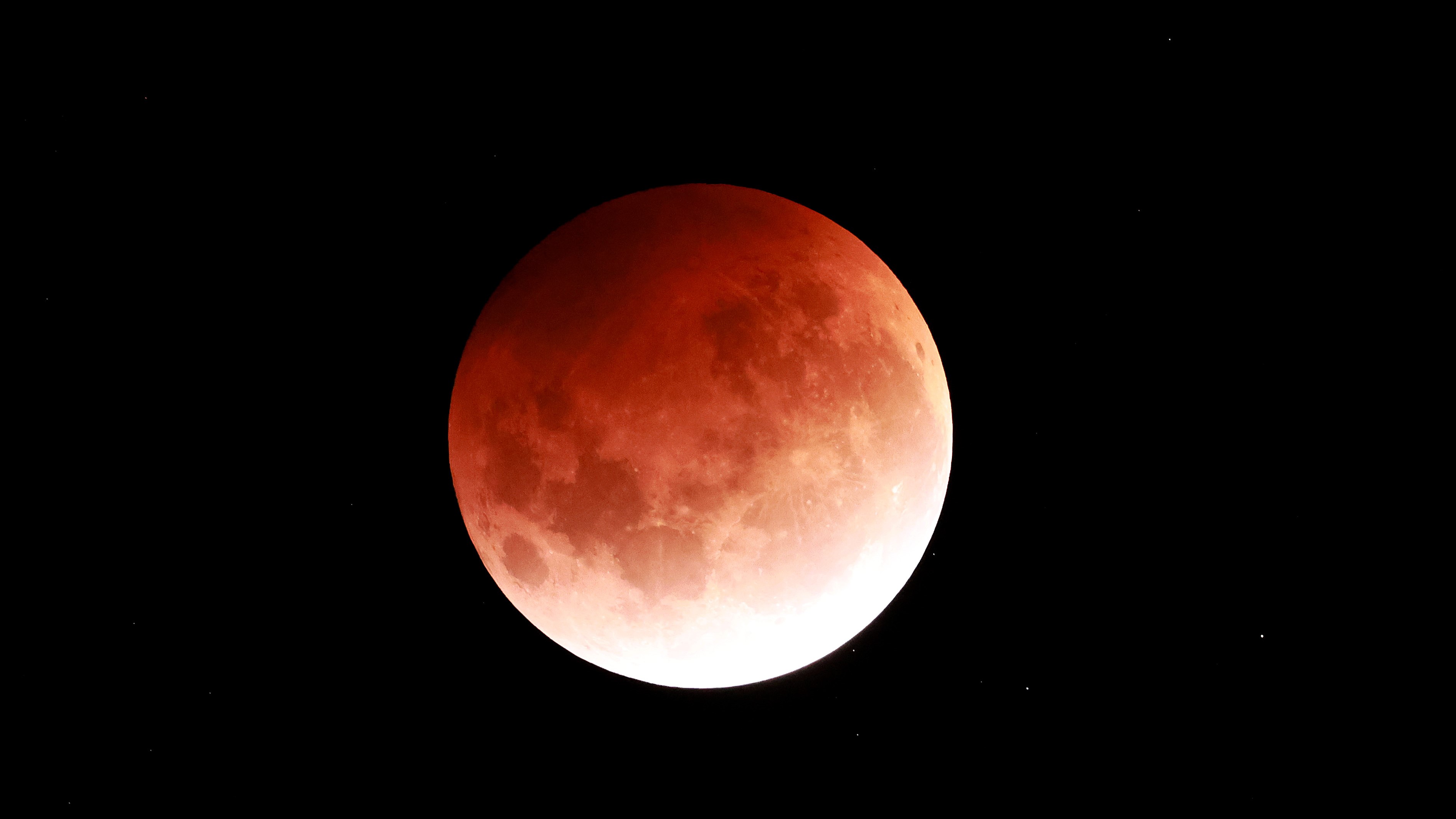
A lunar eclipse is one the most spectacular sights the night sky has to offer. As the moon slides into Earth's shadow, the usually pale white moon is painted a deep shade of red, and it can stay that way for a long time.
Lunar eclipses can be either partial or total, just as solar eclipses are, and they only happen during one phase of the moon: the full moon.
What is a lunar eclipse?
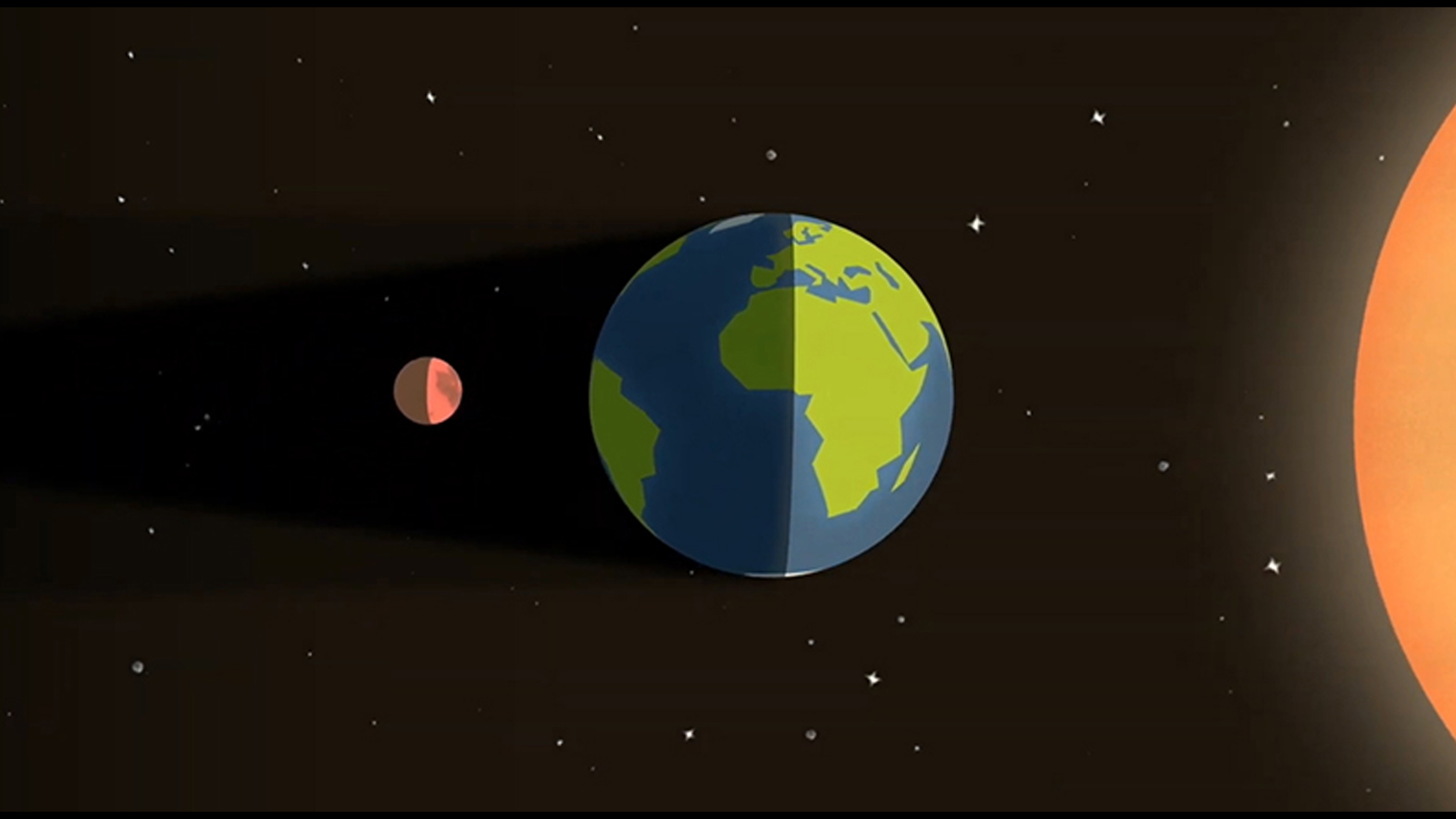
Unlike a solar eclipse, where the moon falls between Earth and the sun,"lunar eclipses happen when the moon passes directly behind the Earth and into the Earth's shadow," Dhara Patel, a space expert at the United Kingdom's National Space Centre in Leicester, told Live Science. "That means they always happen at full moon," Patel said (a full moon occurs when the moon is on the opposite side of Earth to the sun).
Why is a lunar eclipse red?
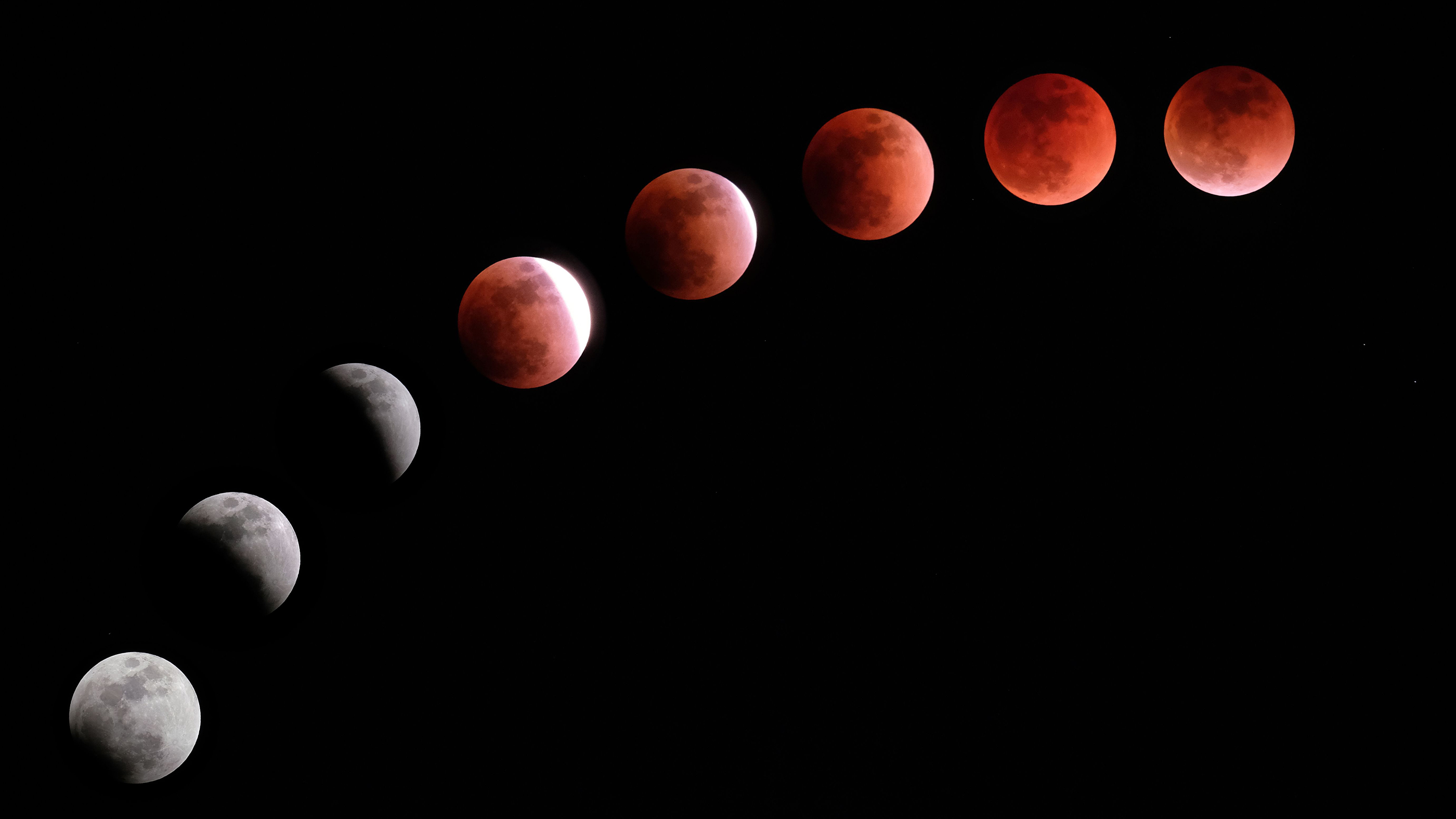
If the moon is in Earth's shadow, then our planet is blocking sunlight from directly reaching the lunar surface. It would be natural to think that we wouldn't be able to see the moon at all during this time. "But, because the Earth has an atmosphere, red light ends up being bent round onto the moon," Patel said, "so that's why lunar eclipses tend to have that blood red color."
Sunlight includes a spectrum of seven different colors — the same colors as a rainbow (as well as infrared and ultraviolet light). During a lunar eclipse, the blue and yellow parts of this spectrum are largely absorbed by Earth’s atmosphere, leaving the red light free to be bent — or refracted — toward the moon, according to the European Space Agency.
The makeup of Earth's atmosphere at the time of an eclipse can dictate the exact shade of red we see. "The more dust there is in the atmosphere, the more that red color can intensify," Patel said.
Volcanic ash, in particular, can play a significant role, at times darkening the moon so much that a lunar eclipse loses its distinctive red color. This volcanic impact is so noticeable that some historians have used historical accounts of particularly dark lunar eclipses to track past volcanic activity.
What are the different types of lunar eclipse?
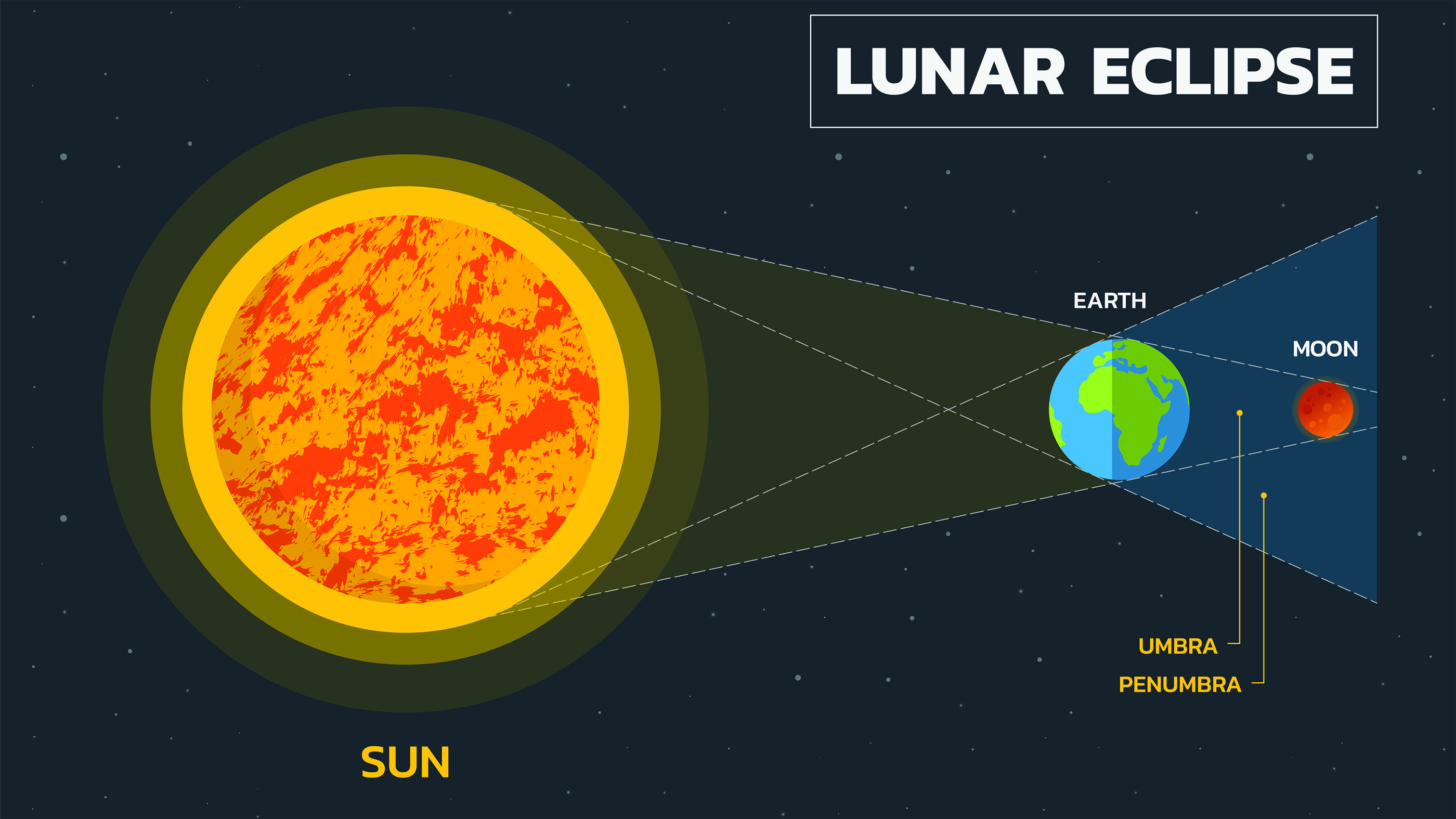
Earth's shadow can be categorized as two separate parts. "The inner circle of the shadow, where it's a lot darker, is known as the umbra," Patel said. "Surrounding that you have the outer circle called the penumbra."
The moon's orbit is tilted, and its path through these shadow regions is always different. "If it passes through the umbra you'll get a total lunar eclipse," Patel said. If the moon straddles the umbra and penumbra then skywatchers will see a partial lunar eclipse, with only a part of the moon obscured from view.
If the moon only passes through the penumbra then we call it, unsurprisingly, a penumbral lunar eclipse. Casual skywatchers would be unlikely to notice that anything has changed at all.
Lunar eclipses are split reasonably evenly between these three types, according to EarthSky.org.
How often do lunar eclipses happen?
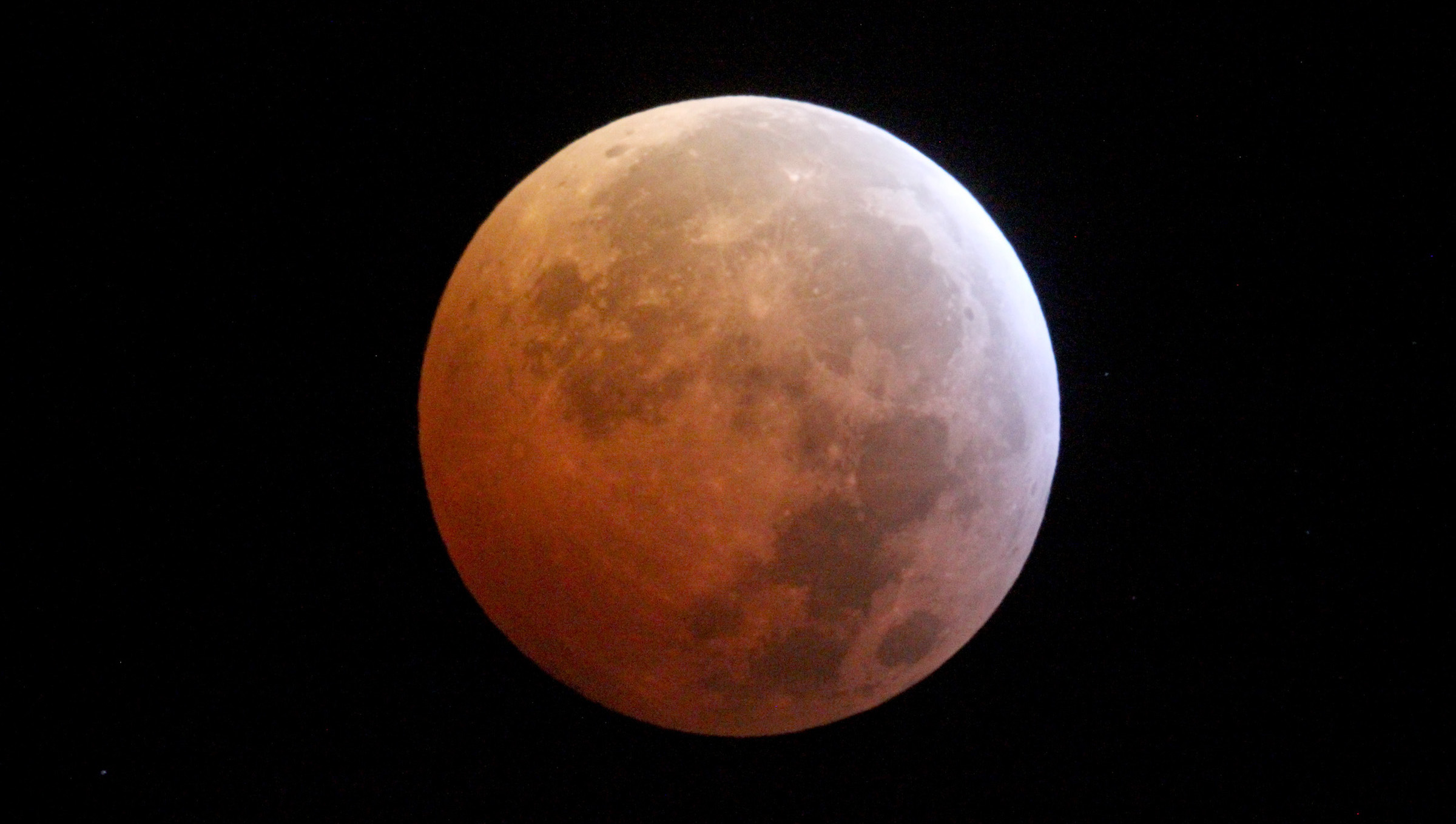
"Lunar eclipses happen two to five times a year," Patel said. "You usually get two total lunar eclipses every three years."
But these eclipses are spread across the entire planet. If you stay in the same location, then you're likely to see a total lunar eclipse once every 2.5 years, Patel said.
That's in stark contrast to the frequency of total solar eclipses. "Any point on Earth may on the average experience no more than one total solar eclipse in three to four centuries," according to Britannica.
When is the next lunar eclipse?
| Date | Type | Location |
|---|---|---|
| May 15-16, 2022 | Total | South/West Europe, South/West Asia, Africa, much of North America, South America, Pacific, Atlantic, Indian Ocean, Antarctica. |
| November 7-8, 2022 | Total | North/East Europe, Asia, Australia, North America, much of South America, Pacific, Atlantic, Indian Ocean, Arctic, Antarctica. |
| May 5-6, 2023 | Penumbral | South/East Europe, much of Asia, Australia, Africa, Pacific, Atlantic, Indian Ocean, Antarctica. |
| October 28-29, 2023 | Partial | Europe, Asia, Australia, Africa, North America, North/East South America, Pacific, Atlantic, Indian Ocean, Arctic, Antarctica. |
How can you view a lunar eclipse?
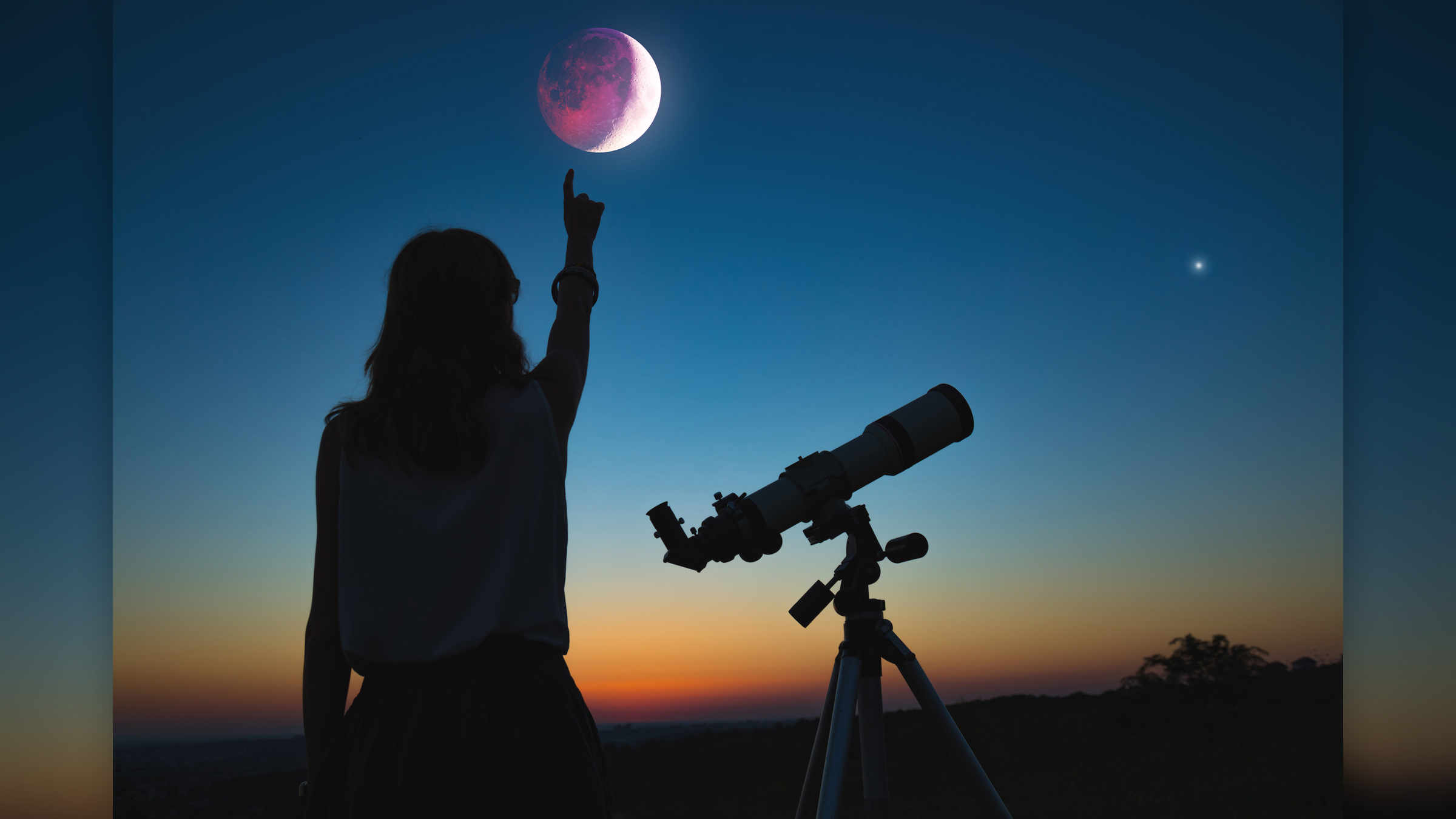
"The great thing about a lunar eclipse is that it happens at full moon," Patel said., "So if you're on the night side of the Earth you should be able to see at least some part of it."
That contrasts with a solar eclipse, for which you have to judge your location very carefully. A lunar eclipse’s duration also makes it easier to witness than a solar eclipse. "A solar eclipse might last a few minutes," said Patel, "but the total part of a lunar eclipse can last up to an hour and even slightly more."
Simply put, you just have to look up at the right time and hope for a cloud-free sky. Patel says there are also fewer safety concerns with a lunar eclipse. "With a solar eclipse you have to be careful not to catch a glimpse of the sun — there are no problems looking at the full moon at night."
Additional resources
Use this handy viewing guide from NASA to learn more about how to view the moon, including during a lunar eclipse. See amazing images of lunar eclipses, also from NASA. Search by zip code for the next lunar eclipse near you at TimeandDate.com.
Sign up for the Live Science daily newsletter now
Get the world’s most fascinating discoveries delivered straight to your inbox.

Colin Stuart is an award-winning astronomy author, speaker and tutor based in the U.K. His popular science books have sold more than 400,000 copies worldwide and have been translated into 21 languages, and he has written more than 200 popular science articles for publications including The Guardian, the Wall Street Journal and the European Space Agency. The asteroid (15347) Colinstuart is named after him and he runs an online Astrophysics for Beginners course and a science writing course.










